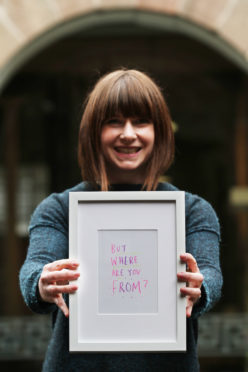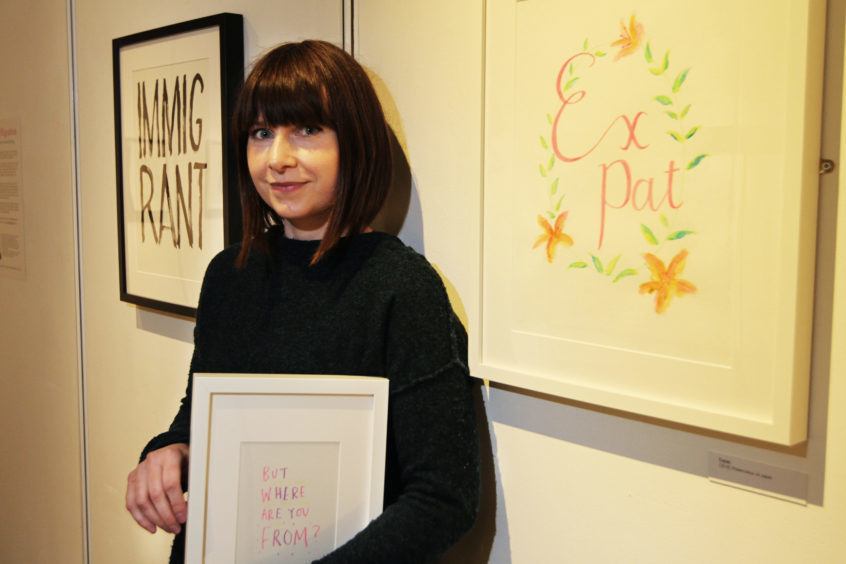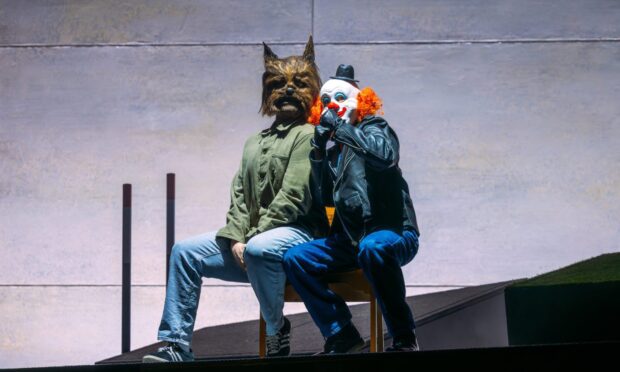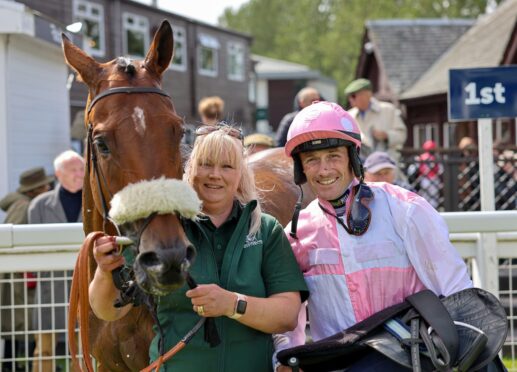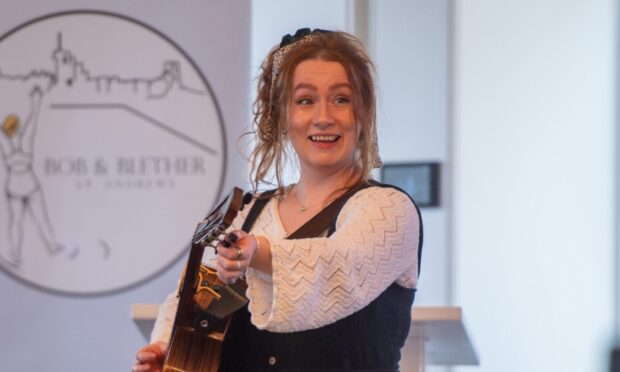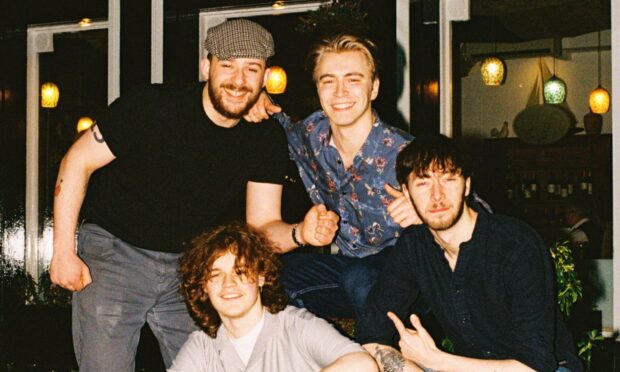While her new solo exhibition has a whimsical and light feel to it, the themes Laura Darling tackles in her pieces are far from soft.
The Dundee-based illustrator has taken her inspiration from an unusual source – her experience working with immigrant women at the Dundee International Women’s Centre.
The DIWC helps women from different backgrounds – many of them marginalised – overcome barriers such as a lack of language, education or employment that can lead to years of social isolation.
“When I started working there I was pretty ignorant about women’s rights, particularly about migrant women. I’m constantly amazed by stories I hear. I’ve met women who have lived under Saddam Hussein’s rule and got out. They weren’t allowed to go to school. That’s totally incomprehensible to me as a white Scottish woman who’s grown up in Scotland, had an education and taken it for granted.
“I felt like I had to do some kind of work about it. It’s such a huge topic that the idea of creating an exhibition around it made sense to me.”
Patterns of Migration opens tomorrow at Verdant Works, a fitting venue given its history as a jute mill that once employed hundreds of migrant women and children.
Louisa Attaheri, curator with the Dundee Heritage Trust, which operates Verdant Works, says: “Blended communities and resilient women are already woven into the fabric of Dundee’s history, and this exhibition links closely with the jute trade, where migrant workers from Ireland arrived in Dundee in their thousands at the end of the 19th Century.”
The exhibition features six wallpaper patterns with titles including But Where Are You From?, which tackles the feeling of not belonging, and Spot the Immigrant, about the perceptions of immigrants and the snap judgements people make based solely on appearance. There’s also an eight-page framed storybook and a satirical comic strip.
“The rationale behind the patterns was we all live with patterns every day,” Laura says, “we might not notice but they’re everywhere. We don’t look at the detail or look into how it was created. I was also drawing parallels with the subject matter that way.”
Laura began working at DIWC in 2014 and is now a part-time project support lead, helping the centre organise classes, social groups, employment training, and events to raise awareness of the issues that exist in the migrant populations in and around Dundee.
“There are women living here who can’t speak English and have never been to school. You could pass someone on the street and not know they’re missing out on so much. It’s a huge barrier. The barrier isn’t just about education and learning, it’s about living and socialising. How do you communicate and broaden your circle if you can’t communicate with other people?”
At the other end of the spectrum Laura works with women who have had successful careers elsewhere but whose qualifications aren’t valid in the UK and they’re “back to square one”. The options are either retrain, often at great expense, or give up their careers.
“You put in all that effort and you go to another country and it’s worthless. You have to go back to your 18-year-old self and start again, and by this point maybe you’ve got children and commitments. Can you afford to go back to square one? That’s an instant barrier.”
Laura says she isn’t judgemental about others’ views on immigrants, but sees the exhibition as a way to give people with limited experience of the subject the opportunity to see things from a different perspective.
“I was ignorant to a lot of these topics before I started working at DIWC and I see this exhibition as an opportunity for people who are like I was and with limited experience of the subject to maybe think ‘oh, I hadn’t thought about it like that’, or ‘how I would feel if that was me?’.”
Patterns of Migration runs until June 24 and 10 per cent of sales from the exhibition go to DIWC.
